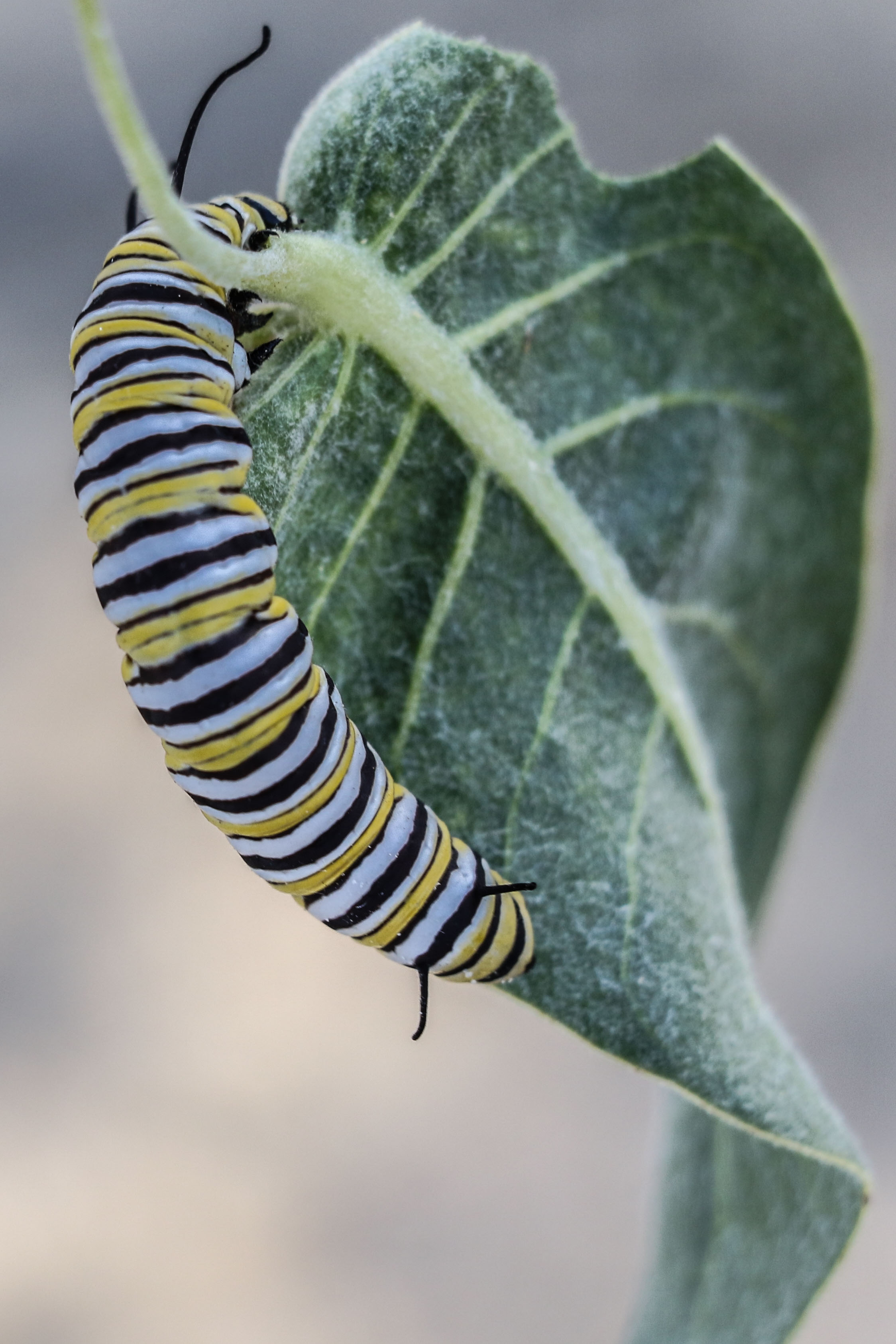Decline of Monarch butterflies
Monarchs are declining. It may not seem like a big deal, but it is. Like frogs, monarchs are a good indicator species of how humans affect nature. Monarch butterflies can drink of the nectar of many flowers, but when they lay eggs, they MUST lay them on a milkweed plant, as their caterpillars ONLY eat milkweed.
Caterpillar on the leaf of Asclepias vestita, Woolly Milkweed.
Where does milkweed grow?
There are 73 species of native milkweed in the contiguous United States, 30 of these species are used regularly by monarchs as host plants. While milkweed grows in the wild, you can also find it in fields, near urban areas, adjacent to agricultural areas and along roadsides. When we bulldoze weeds from the shoulders of roadways, or spray food crops with pesticide/herbicides, develop large housing tracts in the urban interface and scrape land, we are damaging the habitat for milkweed and thus affecting monarchs.
Woolly milkweed grows in the Puma Canyon Ecological Reserve
What can we do?
Transition Habitat Conservancy has constructed a Monarch Waystation in the Puma Canyon Ecological Reserve in Pinon Hills. A Waystation provides nectar food, shelter and host plants for monarch butterflies to lay their eggs on. In addition, we have collected seed from milkweed in the Reserve and will focus on expanding our native population of milkweed. Through the use of our Roberta Dewey Discovery Center's Monarch Waystation, we will educate others in how to make your own Monarch Waystation. Please watch the video at the top of this article to learn more.
Gina Charpentier examines a milkweed for Monarch Butterfly eggs.





